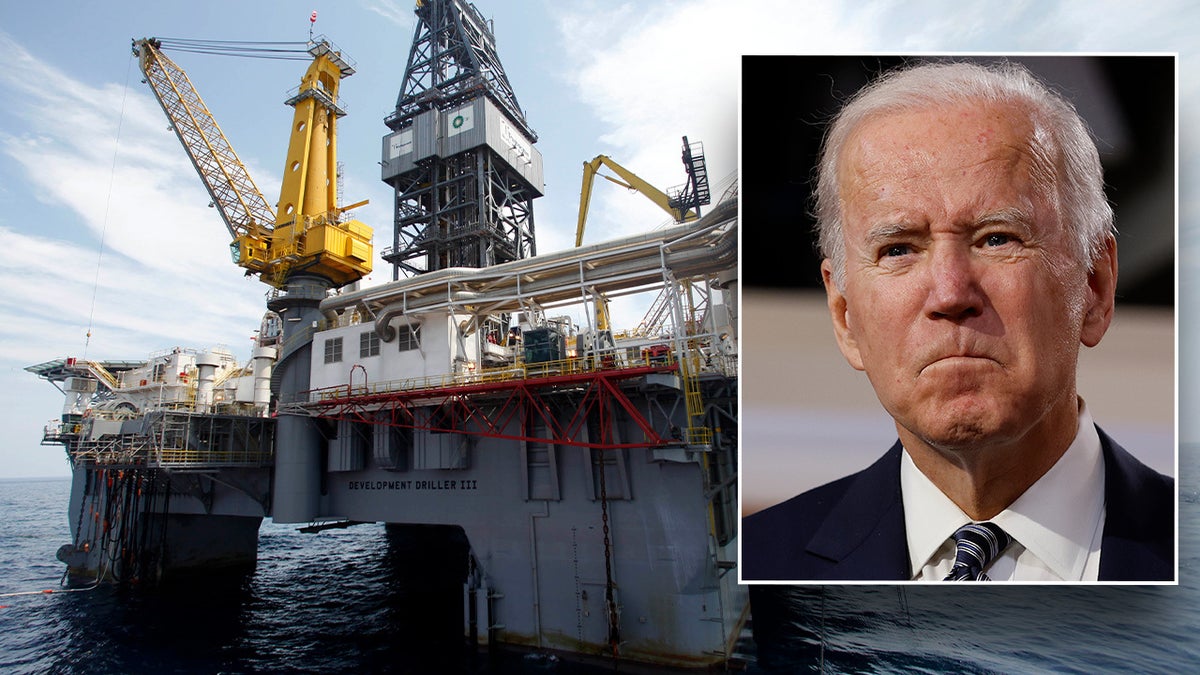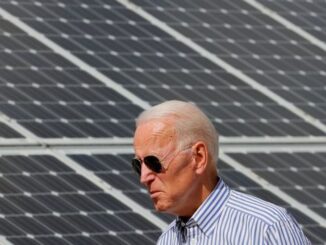
The Biden administration on Friday finalized a plan to dramatically curb the number of offshore oil and gas lease sales over the next five years as it continues to aggressively push green energy development.
The Department of the Interior’s (DOI) five-year offshore oil and gas leasing program schedules just three Gulf of Mexico lease sales through 2029, marking the fewest number of sales ever included in such a plan, which the agency is mandated to issue periodically. According to the DOI, holding the sales will enable future offshore wind leases under an Inflation Reduction Act (IRA) provision that tethers the two.
“President Biden’s approach to severely limit leasing significantly curtails access to a critical national asset,” Erik Milito, the president of the National Ocean Industries Association, which represents both traditional and renewable offshore energy producers, said in a statement Friday. “The White House simply ignores energy realities by once again limiting U.S. energy production opportunities.”
“With global demand at record levels and continuing to rise, regressive policies will harm Americans of all walks of life by putting upward pressure on prices at the pump, destroying good-paying jobs that form the fabric of Gulf Coast communities, and relinquishing geopolitical advantages of energy production to countries like Russia, Iran and China,” he continued.

Milito added that policies limiting offshore production in the U.S. only serve to force greater reliance on energy imports, including from nations with higher emissions and worse environmental standards.
“This jeopardizes our energy security, and economic prosperity, and undermines our efforts to reduce emissions and combat climate change — goals purportedly championed by the current administration,” he said.
Under the plan, the DOI’s Bureau of Ocean Energy Management will hold the three sales of parcels in the Gulf of Mexico in 2025, 2027 and 2029. It also rules out any leasing off the Alaskan coast, and in the Atlantic and Pacific Oceans, in another departure from previous plans.
The administration, meanwhile, signaled that it could have pursued an even more restrictive five-year program if not for the IRA. That legislation — Democrats’ $739 billion climate and tax package signed by President Biden in 2022 — ties new offshore wind energy leases to new oil and gas leases, meaning the former could be threatened without consistent fossil fuel leasing.

Issuing a program with less than three sales — a possibility the DOI floated last year to the dismay of energy industry groups — may have jeopardized Biden’s plan to ensure the U.S. develops 30 gigawatts of offshore wind by 2030. The nation currently has just two tiny pilot projects, one off the coast of Rhode Island and the other off Virginia’s coast, but the DOI has permitted several large-scale facilities since 2021 that are slated to come online in coming years.
“It’s now clear without a shadow of a doubt that without the IRA, this Administration would have ended federal oil and gas development completely,” Senate Energy and Natural Resources Committee Chairman Joe Manchin, D-W.Va., said in September after the DOI proposed the plan finalized Friday.
“But instead of embracing the all-of-the-above energy bill that was signed into law, this Administration has once again decided to put their radical political agenda over American energy security, and the American people will pay the price,” Manchin, who was a lead author of the IRA last year, continued. “Granting the bare minimum of oil and gas leases will result in a minimum of renewables leases as well because the IRA tied the two together. You can’t have one without the other.”

Under the 1953 Outer Continental Shelf Lands Act, the federal government is required to issue plans every five years laying out prospective offshore oil and gas lease sales. The most recent plan, which was implemented in 2017, expired in June 2022.
The persistent delay in issuing a replacement plan, though, represented a departure from precedent set by both Republican and Democratic administrations, which have historically finalized replacements immediately after previous plans expired.
The most recent two plans, both formulated under the Obama administration, included more than 10 offshore oil and gas lease sales each. And the Trump administration sought to hold a total of 47 lease sales across the Atlantic region, the Pacific region and the Gulf of Mexico and off Alaska’s coasts between 2022 and 2027.



